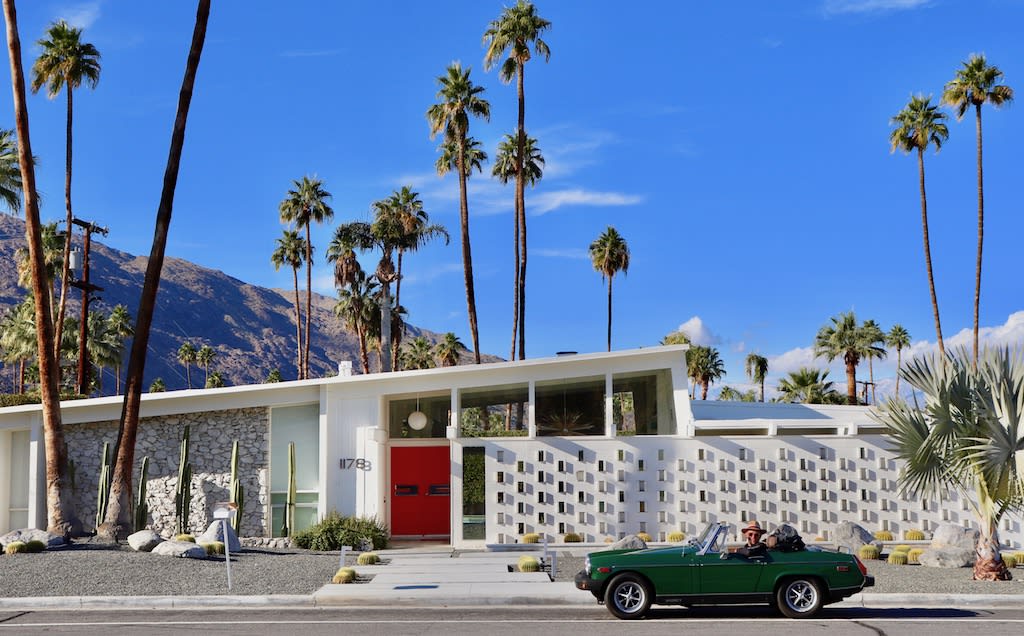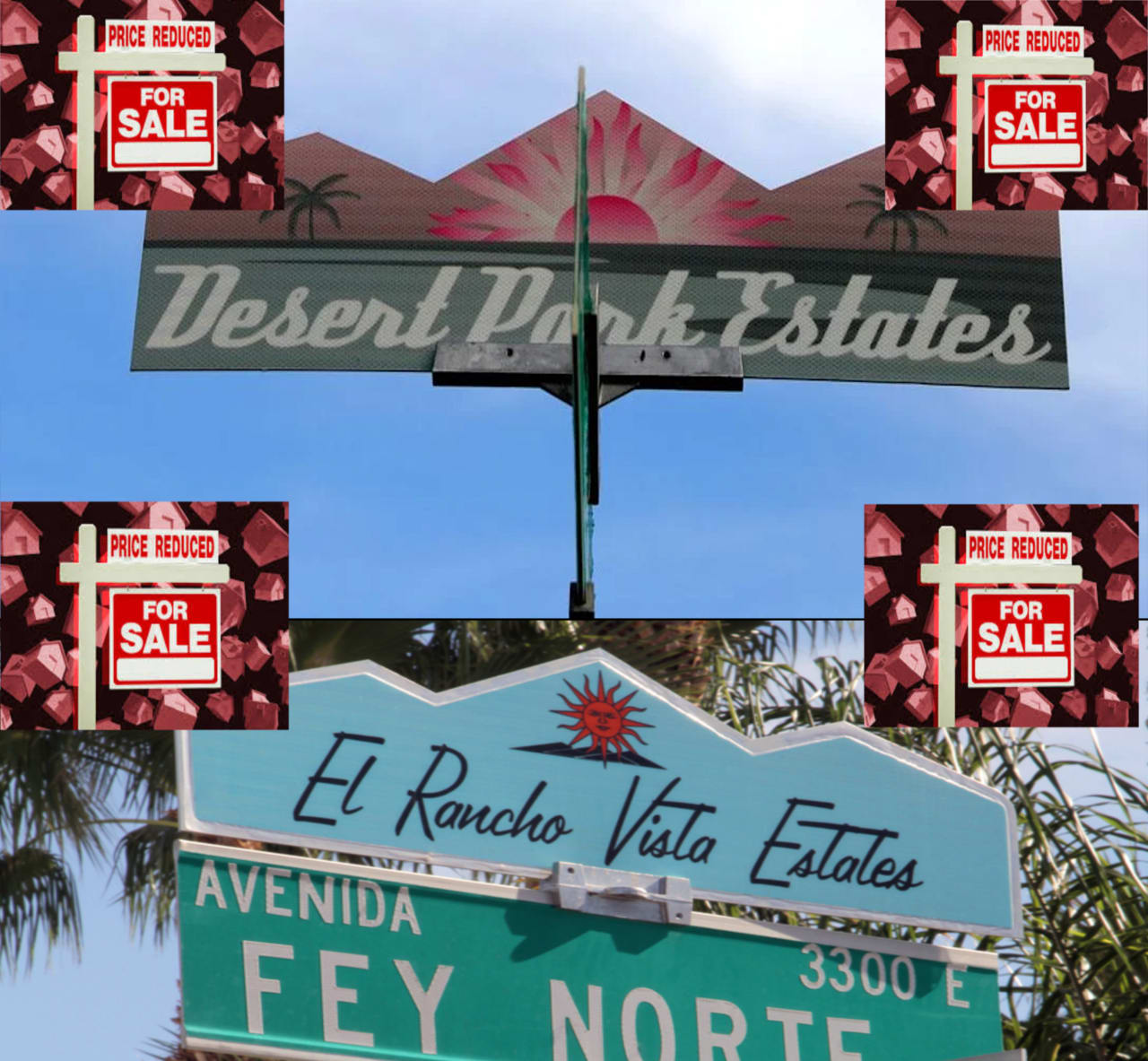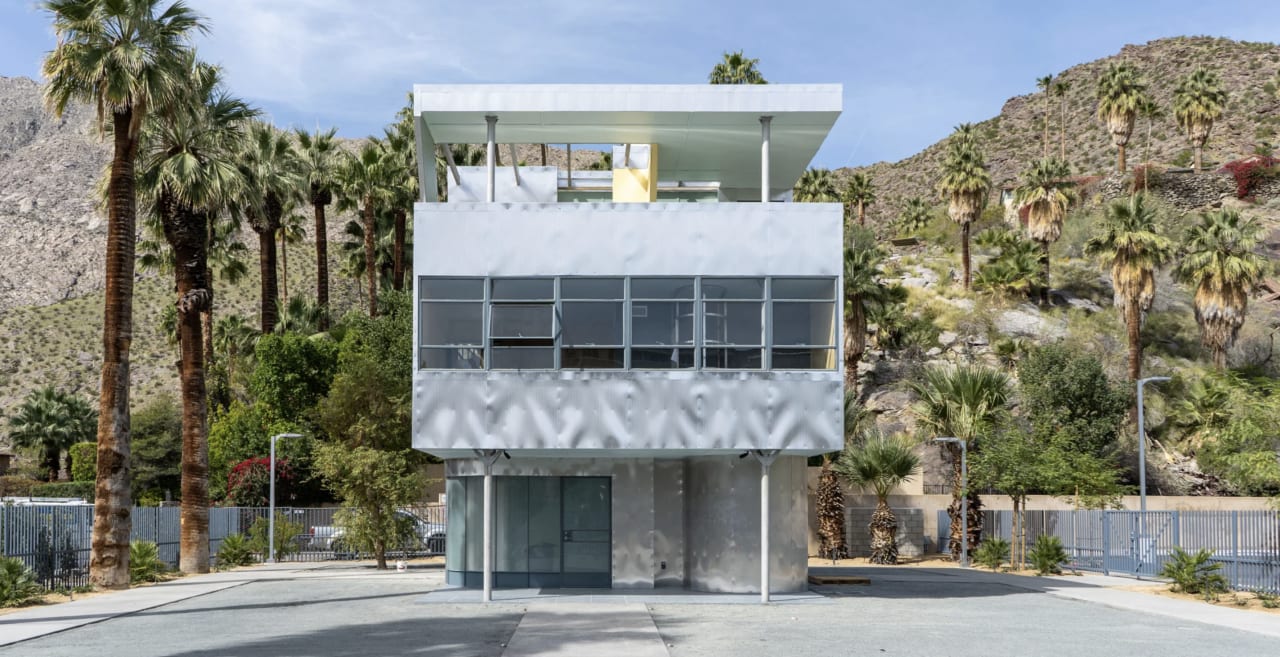Palm Springs has become synonymous with a unique variation of midcentury modern architecture, aptly termed Desert Modernism. This architectural style finds its roots in the Bauhaus movement of Germany, renowned for its straightforward cubic forms, seamless flat roofs, and absence of extraneous decor.
Yet, the visionary architects of Palm Springs didn't merely transplant this style; they reinvented it, ingeniously molding it to the rugged desert topography and the demanding desert climate. This ingenuity gave rise to Desert Modernism, a design philosophy that seamlessly spread across the Southwestern United States, ultimately shaping the broader midcentury modern movement.
Notable Architects of Mid-Century Modern Palm Springs
-
Richard Neutra (1892–1970): An Austrian immigrant, Neutra worked with Frank Lloyd Wright and made significant contributions to Palm Springs' architecture, including the Miller Residence and the iconic Kaufmann Residence.
-
John Lautner (1911–1994): Wright's protégé, Lautner's work in Palm Springs, like the homes for Arthur Elrod and Bob Hope, showcases his unique interpretation of organic architecture.
-
Donald Wexler (1926–2015): A collaborator with Neutra and William Cody, Wexler’s designs include the Steel Development Homes and the Dinah Shore Residence, marking his impact on Palm Springs architecture.
-
William Krisel (1924–2017): Krisel's work, characterized by thousands of residences across Southern California, reflects his close collaboration with the Alexander Construction Company.
-
E. Stewart Williams (1909–2005): Williams' notable designs, such as the Palm Springs Art Museum and the Frank Sinatra residence, exhibit his architectural versatility.
-
William Cody (1916–1978): Cody's designs, including the Del Marcos Hotel, showcase his elegant and simplistic architectural style in Palm Springs and the Coachella Valley.
-
Albert Frey (1903–1998): A key proponent of "Desert Modernism," Frey’s works, including Frey House I and II, shaped Palm Springs' modernist landscape.
-
John Porter Clark (1905–1991): A pioneer of "Desert Modernism," Clark collaborated on many projects, including the Palm Springs City Hall, embodying the city's architectural ethos.
-
George and Robert Alexander (Developers): The Alexanders were instrumental in popularizing affordable mid-century modern homes in Palm Springs, including developments like Twin Palms and Vista Las Palmas.
-
Hugh Kaptur (1931–): Kaptur’s designs, such as the Steve McQueen Residence, showcase his significant contribution to Palm Springs' architectural heritage.
-
Jack Meiselman (Developer): Meiselman's homes, akin to those by the Alexander Development Company, contributed to the mid-century modern landscape of Palm Springs.
-
A. Quincy Jones (1913–1979): Jones collaborated on multiple Palm Springs projects, including the Palm Springs Tennis Club, infusing modernist aesthetics into the city’s architecture.
The hallmark of Palm Springs Desert Modernism is its harmonious integration with the natural desert environment and its strategic enhancement of the majestic mountainous terrain. The design approach involves employing exterior hues that echo the desert landscape, ensuring structures blend into the background. The homes maintain a low profile, often nestled amidst the desert rocks, to preserve the panoramic mountain views. Even the rooflines are subtle, with minimal pitches that echo the natural gradients of the mountains, reflecting an unparalleled architectural symbiosis with the land.
Desert Modernism stands out with its unique adaptation to arid environments and lifestyle preferences. Emphasizing openness and durability, these homes feature large glass panels that frame the stunning desert vistas and invite the outdoors in. Materials selected for these structures withstand the intense heat while keeping the interiors comfortably insulated.
Shadowblock and clerestory windows in Canyon View Estates // photo by Bethany Nauert for Palm Springs Style
The distinctive roofs of Desert Modernism have become emblematic of the style, with the iconic flat shed, butterfly, and folded plate roofs dominating the landscape. The interiors boast post-and-beam ceilings and use patterned concrete breezeblocks. These architectural elements are not just aesthetically pleasing but serve a practical purpose by filtering the sunlight and enhancing privacy, without compromising on the panoramic desert views.
Iconic Structures of Desert Modernism: A Historical Perspective
The genesis of Desert Modernism can be traced back to the 1930s, marked by the works of esteemed architect Richard Neutra. Among his pioneering designs is the Grace Miller House, conceived as a harmonious blend of utility and simplicity, with expansive glass and a minimalist aesthetic.
Kaufmann House
Neutra’s Kaufmann House, completed in 1947, epitomizes modernist ideals with its pinwheel design and integration of glass, steel, and stone. This architectural marvel gained further acclaim as the backdrop for Slim Aarons' iconic "Poolside Gossip" photograph.
Sinatra Twin Palms Estate // photography by Jeff Mindell for Palm Springs Style
Frank Sinatra's Architectural Legacy: The Sinatra Twin Palms Estate Frank Sinatra’s architectural taste took a modernist turn with the Sinatra Twin Palms Estate, designed by E. Stewart Williams. Abandoning his initial preference for Georgian style, Sinatra embraced a sleek design with a flat shed roof and generous glass windows, encapsulating the essence of Desert Modernism.
Architectural Marvels by E. Stewart Williams: Celebrating Palm Springs Design Williams' architectural mastery extends beyond residential projects, shaping the Palm Springs landscape with notable commercial edifices like the Palm Springs Art Museum and iconic bank buildings, now cultural landmarks.
Palm Springs Art Museum Architecture and Design Center
Preserving Architectural Heritage: Frey House II and the Palm Springs Art Museum
Frey House II // photography by Bethany Nauert for Palm Springs Style
Frey House II, a testament to Albert Frey’s innovative design, incorporates the natural terrain into its structure, exemplifying sustainable space utilization. This architectural gem, along with Frey’s other collaborative works, contributes significantly to Palm Springs’ modernist legacy.
The Alexander Impact: Making Modernist Architecture Accessible
The Alexander Construction Company revolutionized the availability of modernist homes with their affordable designs. Their collaboration with architects Dan Palmer and William Krisel led to iconic neighborhoods like Twin Palms Estates, introducing the quintessential butterfly roofs and open-plan layouts to a wider audience.
Modernism for the Masses: Experience the Legacy in Palm Springs
Palm Springs is a hub for modernist architecture enthusiasts. Visitors can immerse themselves in the style by staying at midcentury modern hotels or during the celebrated Modernism Week events, which offer extensive tours of the area’s architectural marvels.
For a comprehensive self-guided experience, the Palm Springs Modern Committee's app provides a digital gateway to over 80 significant midcentury landmarks.









